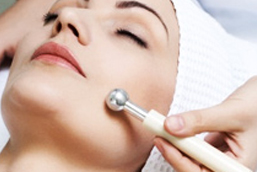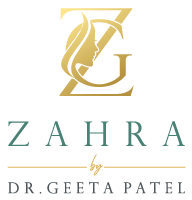Facts about Facial Skin Rejuvenation
Dermatologists and dermatologic surgeons have the medical training and experience required to use a wide range of surgical and non–surgical methods to treat skin conditions. As experts on skin aging, these doctors are uniquely qualified to keep skin healthy and youthful looking.
- Facial rejuvenation can effectively
- Reduce wrinkles
- Treat sun spots
- Tighten loose skin
- Improve skin tone and color
- Remove blotchiness
- Eliminate damaged blood vessels

Risks of facial skin rejuvenation
Treatment is usually performed in a dermatologist's office, which offers the patient a convenient and cost-effective approach with little or no down time. Many factors influence the treatment that the dermatologist may recommend to rejuvenate one's face, including age, health, skin type, and the amount of sun damage. A dermatologist also can recommend rejuvenation procedures for other areas, such as the skin on the neck, shoulders, or hands. In some cases, more than one treatment may be used to produce better and longer-lasting results. Facial rejuvenation procedures fall into the following key categories:
Facial rejuvenation procedures fall into the following key categories:
Topical Products
Either prescription or non-prescription products, topicals are usually used to treat milder signs of aging, such as fine lines and superficial wrinkles. Topicals also offer preventive value and can reduce the need to repeat procedures or increase the time between them.
Fillers and Botulinum Rejuvenation
Soft-tissue fillers are generally used to "plump" furrows and hollows in the face, reduce wrinkles, and give the skin a smoother and more youthful-looking appearance. They also are very effective at
contouring specific areas on the face, such as around the lips and mouth, and can correct depressions and scars.
Filler substances include hyaluronic acid.
Botulinum toxin type A injections diminish lines and wrinkles associated with facial expression. A very safe and effective procedure, it involves injecting tiny amounts into specific muscles in order to relax the muscles as that reduces the appearance of fine lines and wrinkles. Botulinum rejuvenation is used to treat vertical lines between the eyebrows and on the bridge of the nose, forehead lines and furrows, and crow's feet. This procedure also may be used to diminish visible bands on the neck.
Microdermabrasion uses micro-particles, or a diamond-tipped wand, to remove some of the top skin layer (epidermis) and stimulate new skin growth. This non-invasive treatment produces virtually no discomfort, requires no topical or local anesthetic, and involves practically no recovery or downtime. Multiple treatments spaced two to three weeks apart are needed.
Chemical Peels
Chemical peels are used to treat wrinkles around the eyes and mouth, skin discoloration, age spots, dull skin texture, and mild acne scars by applying a chemical solution to remove the outer layers of skin and stimulate new skin growth. The new skin is usually smoother, less wrinkled, and more even in color. Chemical peels may produce reddening and peeling similar to a sunburn, which typically lasts a few days to several weeks, depending on the strength and depth of the peel.
Laser and Light Resurfacing - Lasers, IPL & LED
Laser rejuvenation can effectively treat certain scars, skin discoloration, and broken blood vessels. It also effectively treats lines and blemishes on the neck and can modestly tighten sagging skin. Laser resurfacing is used to treat wrinkles, deeper scars and early changes leading to cancerous skin growths. However, laser resurfacing is not a substitute for a facelift. Having laser resurfacing may delay more invasive procedures by tightening loose skin and diminishing certain folds and creases.
Today, many different lasers are used to rejuvenate the skin, including:
Ablative Lasers
Laser rejuvenation can effectively treat certain scars, skin discoloration, and broken blood vessels. It also effectively treats lines and blemishes on the neck and can modestly tighten sagging skin. Laser resurfacing is used to treat wrinkles, deeper scars and early changes leading to cancerous skin growths. However, laser resurfacing is not a substitute for a facelift. Having laser resurfacing may delay more invasive procedures by tightening loose skin and diminishing certain folds and creases.
Non-Ablative Lasers
Work beneath the surface skin layer to stimulate collagen growth and tighten underlying skin to remove fine lines with little to no healing time.
Fractional Rejuvenation
Non-invasive technology that precisely targets the small areas of skin where damage has occurred, leaving the surrounding, healthy skin untouched and better able to assist in the healing of the damaged cells.
Intense pulsed light (IPL)
Uses broad-spectrum light, which filters out unwanted harmful wavelengths. It can be used to treat vascular lesions, improve skin texture and color, and reduce pore size.
Light emitting devices (LED)
May help to treat skin discoloration and fine wrinkling.
Plasma Technology
Helps to improve fine lines, skin tightening and pigmentation.
Radiofrequency Technologies
This non-invasive technology causes skin contraction and tightening that can lead to lifting of the face, brow, and cheeks without surgery or downtime.
Photodynamic Therapy
Used to treat sun-damaged skin, this procedure involves applying a topical medication, 5-aminolevulinic acid (ALA), to the skin. The medication is left on the skin for a specified time. The area is then treated with blue light, IPL, or a pulsed dye or KTP laser. The procedure can effectively treat early changes in the skin that may
lead to skin cancer.
Surgical Excision
A number of surgical procedures are used to remove (excise) moles, scars, and benign skin growths that may enlarge with age. If surgical excision is appropriate, the dermatologist can explain how the procedure is performed and explain the risks and benefits of the chosen procedure.
Tumescent Liposuction
Invented by a dermatologist, this minimally invasive surgical procedure is used to remove unwanted fat. When used on the face, it can eliminate sagging jowls or a double chin, improving the contour of the face and neck areas and rejuvenating the aging face. Tumescent liposuction can be performed in a dermatologist’s office under local anesthetic.
Neck and Jowl Treatments
A growing number of facial rejuvenation procedures are being applied to improve the neck and jowl areas. Depending on how advanced the condition, treatment options may include a combination of different techniques, such as chemical peels, botulinum rejuvenation, laser resurfacing, tumescent liposuction, and neck lifting.
Facial Rejuvenation Treatments
Minimal Amounts Of Aging & Skin Damage
- Topicals
- Superficial Chemical Peels
- Fillers, Botulinum Toxin Rejuvenation
- Non-Ablative Lasers
- Microdermabrasion
- LED Technology
- IPL Technology
Moderate Amounts Of Aging & Skin Damage
- Topicals
- Medium Chemical Peels
- Fillers, Botulinum Toxin Rejuvenation
- Dermabrasion
- IPL Technology
- Non-Ablative Lasers
- Fractional Rejuvenation and Resurfacing
- Photodynamic Therapy
- Ablative Laser Resurfacing
- Surgical excision of skin growths
- Radiofrequency
Severe Amounts Of Aging & Skin Damage
- Topicals
- Fillers, Botulinum Toxin Rejuvenation
- Fractional Resurfacing
- Ablative Laser Resurfacing
- Deep Chemical Peels
- Surgical excision of skin growths
- Eyelide, face, or neck lift
- Radiofrequency Technology


